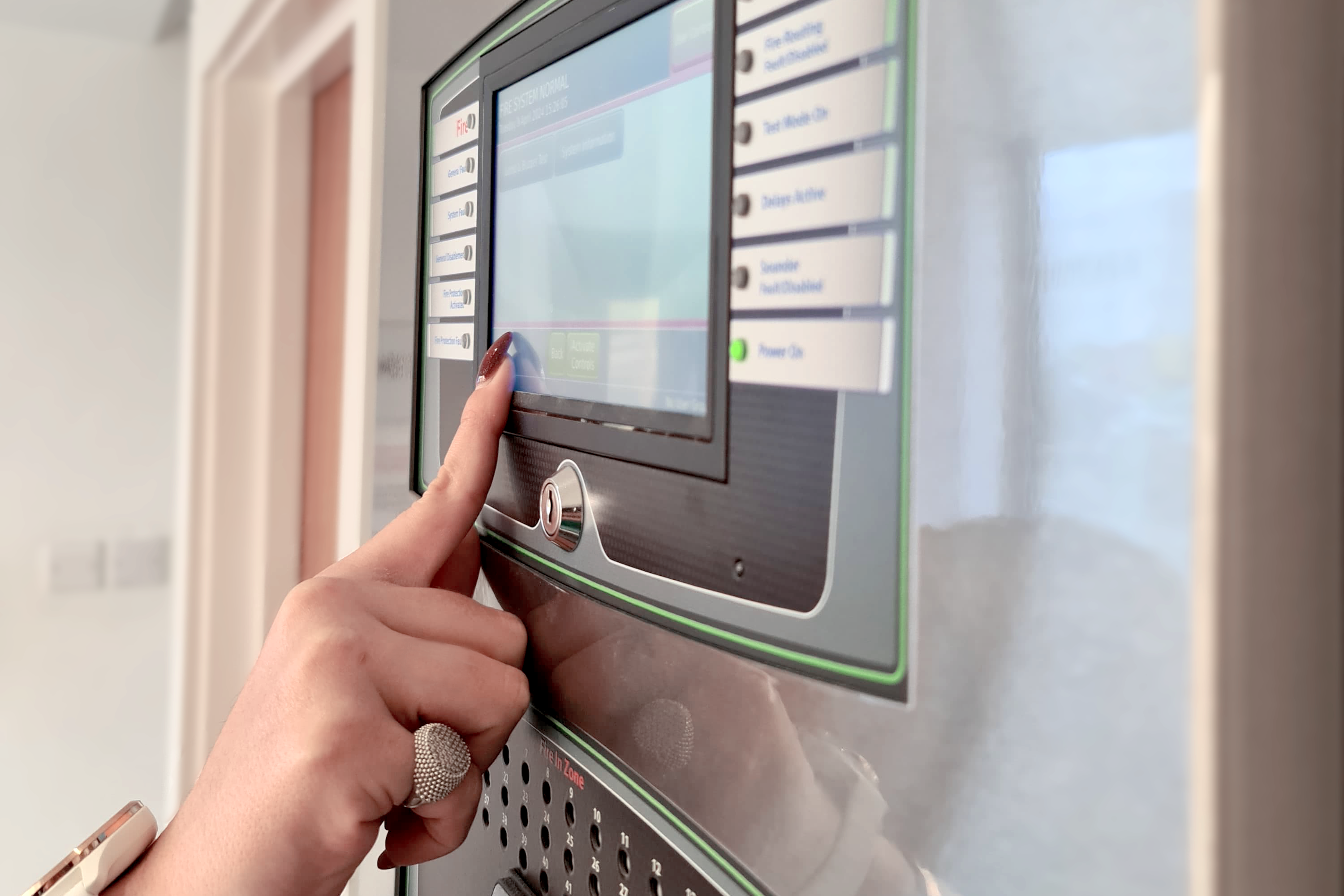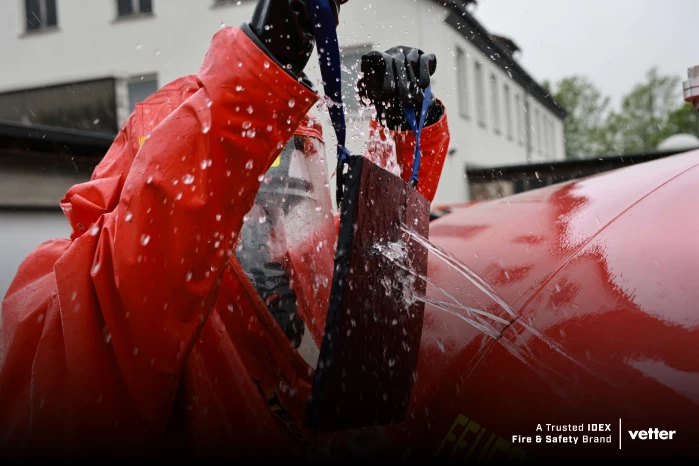Stefan Haug, Product Marketing Manager, Fire at Bosch Security Systems explains how their video surveillance technology is transcending from the security industry into fire detection applications for warehouses and industrial spaces
Warehouses can be a fire-fighter’s worst nightmare. Although warehouse fires do, thankfully, usually result in few bodily injuries or deaths, the lack of early fire detection technologies and the immense fire loads in warehouses do often result in fire-fighters arriving on the scene just to see that it’s too late – the fire has already become too hazardous and too large to risk entering the warehouse. Total loss of the building is the typical result. Video-based fire detection technologies promise faster and more accurate detection of such potentially devastating fires, allowing fire-fighters to limit the damage.
Most warehouses are characterised by high ceilings and very large open areas, also resulting in huge volumes of air inside which is a major challenge for traditional fire detection technologies. Usually, such technologies have been developed to discover the presence of smoke, heat or flames. In warehouse environments, heat detection by means of sprinklers is a commonly used technology, but even fully compliant sprinkler systems may not be able to extinguish the fire they detected. Using sprinklers also bears the potential of the water doing more harm than the fire itself. They are designed to save the building, not the commodities inside.
Smoke detection is considered to be a reliable option for early fire detection. Smoke is usually produced way before any flames become visible. However, traditional detectors like point-type, beam or even aspirating smoke detectors need the smoke to migrate to their location, which is a challenge in large warehouses. Mounted at ceiling level, point detectors are usually far away from the source of the smoke. Furthermore, given the large volume of a warehouse, the smoke is being heavily diluted. A starting fire may thus not produce enough smoke to be detected or not enough buoyancy to drive the smoke upwards to the ceiling where the detectors are located. In addition, traditional detectors need some maintenance which can be hard and expensive to perform in high warehouses with narrow aisles between shelves full of commodities.
Optical beam smoke detectors can be an option in some environments, but they still need the smoke to migrate to the area of detection. They can be located at lower heights than point detectors usually are, but then may be disturbed by moving equipment such as automated storage and retrieval systems (ASRS). They are also prone to misalignments due to vibrations or building motion caused by wind. Aspiration detectors, finally, suffer from the very same problems that other smoke detectors do: They need buoyancy or ventilation because they can pull smoke over short distances only.
The only smoke detection technology that does not need the smoke to migrate to the sensor is video. Video-based smoke detection is basically a set of algorithms in an intelligent camera. These algorithms process the camera image to determine whether smoke is present, and they can detect a fire as soon as the smoke enters their field of view. This way they can cover larger areas and volumes than point, beam or aspiration detectors, making them a much more affordable solution for warehouse environments. Further, in such environments video is much faster than traditional smoke detection. It can detect a starting fire within ten to 30 seconds while other technologies will need minutes due to the slow smoke migration – minutes that can make the difference between a nuisance and a disaster.
Detect smoke and flames
But video can do more than just smoke detection. If you use one set of algorithms to identify smoke, you can just as well implement another set to deal with flames. Flame characteristics of different fires are well understood, and thus flame detection through intelligent video analysis is just as reliable as smoke detection. Using video to detect flames avoids the necessity to install and operate optical flame detectors and adds additional value by way of full video visualisation of the scene. The operator can therefore precisely locate the seat of the fire as well as involved commodities, potentially providing valuable time for fire-fighting. The video image can also be used to verify alarms in the first place, avoiding costly false alarms. However, video-based fire detection (VFD) is by itself highly immune against such false alarms, as intelligent video analysis within the camera allows to detect disturbing values such as movement, reflections or changing lighting conditions and to offset such influences. In internal tests, Bosch Security Systems has therefore achieved very high detection reliability in all test fires (TF1 through TF8) as specified in EN54.
Cameras cover broad areas, need little maintenance and do not even require individual power supplies. With Power over Ethernet (PoE), power and video signals use the same cable, even allowing the camera to benefit from the uninterruptable power supplies (UPS) in the Ethernet switches. Video-based solutions thus come with a very affordable cost of ownership.
Video-based fire detection systems scales well from a single camera to a networked system of distributed cameras with a central console and management system. They can relay alarms to an existing fire alarm panel or transmit them via Ethernet to the monitoring centre or even a mobile device. Receiving HD quality video images in real time during their approach gives the fire-fighters a good understanding of the current situation even before they arrive on the scene.
Video combines safety and security
While video-based fire detection can be more reliable and more affordable than other technologies in most warehouse scenarios, it offers an additional benefit that no other option can. It allows to combine safety and security.
Having installed a video-based fire detection system, the operator of a warehouse can use the very same cameras for video surveillance. There are lots of reasons to monitor the warehouse, avoiding theft being the most obvious one. But just as intelligent algorithms can identify smoke or flames, others can detect unusual movements as well as blocked aisles or emergency exits, thus increasing safety and operational efficiency. Finally, arson ranks second only to electrical problems when it comes to the causes of warehouse fires, and video surveillance can be a very efficient means of prevention.
Two approaches to VFD
There are two different approaches to video-based fire detection. VFD can complement existing technologies such as sprinklers or smoke detectors, greatly increasing speed and accuracy of fire detection. Next to warehouses, there are many other scenarios where solutions exist, but are unsatisfactory. These include environments with high ceilings, dusty and humid areas, very large open spaces or distributed small facilities such as power stations or signal boxes. On the other hand, VFD can be a solution for applications where no other solution exists. Think of saw mills with their extreme fire load – sawn wood is the most common material to ignite in warehouses. Sheltered outdoor environments such as half open buildings and some hangars or large monitoring areas such as generator halls in power plants are other examples.
Preconditions for VFD
Although video-based fire detection offers a lot of benefits including additional safety, it must be mentioned that today it cannot replace EN54 installations. It is an Active Work Item in ISO, though, and so you can expect certification in the future. FM3232 and UL286B are available today. However, even without EN54, VFD can be the best available option where no other EN54 compliant solution exists anyway. In some situations it even has the potential to enable insurance coverage for an environment that so far had to go uninsured. In other scenarios it may very well complement existing fire alarm systems to increase the safety level and integrate video surveillance.
Another condition is native to video – it needs light. Flames and/or smoke must be visible for the video camera to detect it. While availability of light is usually not a real issue in warehouse environments, it is in other applications. Bosch will therefore implement VFD in its Starlight series of cameras which have been designed for very low light conditions. First implementations are expected by the end of 2015.








